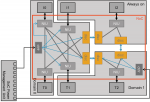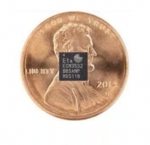Based on what I’m seeing, I believe Cadence is looking at the world a bit differently these days. I first reported about their approach to machine learning for EDA in March, and then there was their white paper about Intelligent System Design in April. It’s now May, and Cadence is shaking things up again with a new white paper entitled… Read More
Artificial Intelligence
Flex Logix CEO Update 2020
We started working with Felx Logix more than eight years ago and let me tell you it has been an interesting journey. Geoff Tate was our second CEO Interview so this is a follow up to that. The first one garnered more than 15,000 views and I expect more this time given the continued success of Flex Logix pioneering the eFPGA market, absolutely.… Read More
AI, Safety and Low Power, Compounding Complexity
The nexus of complexity in SoC design these days has to be in automotive ADAS devices. Arteris IP highlighted this in the Linley Processor Conference recently where they talked about an ADAS chip that Toshiba had built. This has multiple vision and AI accelerators, both DSP and DNN-based. It is clearly aiming for ISO 26262 ASIL D … Read More
Key Applications for Chip Monitoring
One of the side benefits of working with SemiWiki is that you get to meet a broad range of people and in the semiconductor industry that means a broad range of very smart people, absolutely. Recently I had the pleasure to meet Richard McPartland of Moortec. Richard and I started in the semiconductor industry at the same time but from… Read More
Using ML Acceleration Hardware for Improved DSP Performance
Some amazing hardware is being designed to accelerate AI/ML, most of which features large numbers of MAC units. Given that MAC units are like the lego blocks of digital math, they are also useful for a number of other applications. System designers are waking up to the idea of repurposing AI accelerators for DSP functions such as … Read More
Accelerating Edge Inference with Flex Logix’s InferX X1
For a long time, memories were the primary technology driver for process development. If you built memories, you got access to cutting-edge process information. If you built other products, this could give you a competitive edge. In many cases, FPGAs are replacing memories as the driver for advanced processes. The technology… Read More
How does TensorFlow Lite on Tensilica HiFi DSP IP Sound?
In all the hubbub about AI/ML, it’s easy to see why visual ML gets more attention. It’s got appeal because of applications such as autonomous driving. Because of this it’s easy to overlook the importance of audio ML. I own a Tesla and putting it into autopilot is very cool, but even it has voice recognition built in as an important feature… Read More
Wave Computing and MIPS Wave Goodbye
Word on the virtual street is that Wave Computing is closing down. The company has reportedly let all employees go and will file for Chapter 11. As one of the many promising new companies in the field of AI, Wave Computing was founded in 2008 with the mission “to revolutionize deep learning with real-time AI solutions that scale from… Read More
Cadence – Defining a Roadmap to the Future
Cadence recently published a position paper that details a set of enabling technologies that will be needed for product design going forward. Entitled Intelligent System Design, the piece describes the changing landscape of system design and the requirements for success. Cadence has built a branded approach to address these… Read More
Artificial Intelligence in Micro-Watts: How to Make TinyML a Reality
TinyML is kind of a whimsical term. It turns out to be a label for a very serious and large segment of AI and machine learning – the deployment of machine learning on actual end user devices (the extreme edge) at very low power. There’s even an industry group focused on the topic. I had the opportunity to preview a compelling webinar about… Read More










Quantum Advantage is About the Algorithm, not the Computer